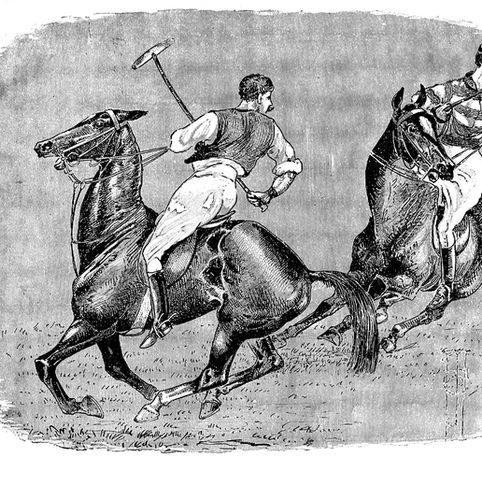
About POLO:
A passport to the world
“Churchill once famously said, “A polo handicap is a passport to the world”
There is debate about where polo was first played, with some scholars saying it originated among the Iranian tribes sometime before Darius I and his cavalry forged the first great Persian Empire in the 6th Century BC. Persian literature
and art are full of rich accounts of polo in antiquity.
Dinvari, a 9th Century historian gives instructions to players including: ‘polo requires a great deal of exercise’, ‘if a polo stick breaks during a game it is a sign of inefficiency’ and ‘a player should strictly avoid using strong language and should be patient and temperate’. During the 10th century the Persian King Qabus also set down some general rules of polo including the risks and dangers of the game.
Polo was a popular royal pastime for many centuries in China, it is thought they would have been taught to play by Indian tribes, who in turn would have learned it from the Persians. The polo stick appears on royal coats of arms in China and the game was part of the court life in the golden age of Chinese classical culture under Ming-Hung. In 910 AD Emperor Tai Tsu ordered all the other players beheaded after a favourite was killed in a match.
The Japanese learnt polo from the Chinese, while the game spread as far West as Egypt, with the Arab conquests of Asia Minor beginning in the 8th Century. The game reached Constantinople under the Byzantine Emperors. It is recorded that Emperor Hohannes Chinnasus, played until his leg and arm were crushed in a bad fall during a match.
The Muslim conquerors also took the game to the Indian subcontinent where it was played by the Muslim rulers and adopted by local Kings and Princes near Anarkali Bazaar in Lahore there is a monument to Sultan Qutabuddin Aibak, a 13th century King who died when his pony fell during a polo match.
Legend has it that Timurlane, a descendant of the great Khans, once ordered his cavalry to play polo with the heads of their captives. Isfahan is a spectacular tribute to polo designed by Shah Abbas the Great. He planned his city around a vast central square, the Maidan-i-Shah. This was the royal polo ground, which was about 50 yards long and 150 yards wide and at each end were stone goal posts eight yards apart, which is still the regulation width of a polo goal.
For more than 20 centuries polo remained a favourite of the rulers of Asia – it was the nearest equivalent to a national sport in those times from Japan across Asia and the middle east to Egypt. As these once great Eastern Empires collapsed, however, the game of polo was preserved only in remote villages.
Evolution of Modern POLO
British officers started playing polo in North-East India. Their first polo club was formed at Cachar in 1859 and the Calcutta Cup started in 1862. The game rapidly spread among regiments all over India, with the oldest important tournament being the Inter-Regimental in 1877.
In 1891, the Indian Polo Association ws formed. By 1902, there were 175 clubs playing under IPA rules. The Calcutta Polo Club is regarded as the oldest polo club in the world. The British took the game to England and from there it spread to the rest of the world.
Today the top polo playing countries are Argentina, USA, Chile, Brazil, Mexico, England, Australia and New Zealand.









